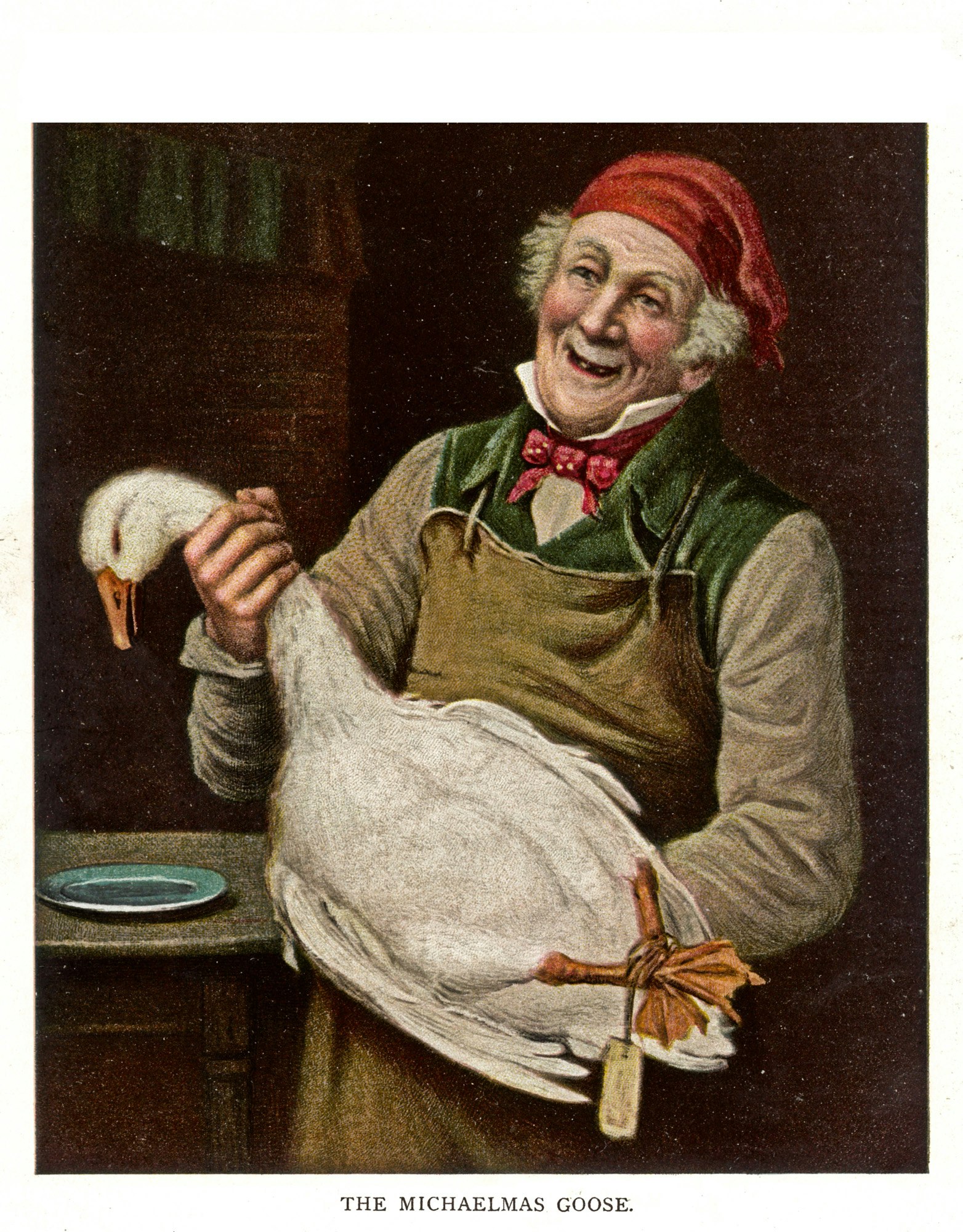This article is taken from the August-September 2024 issue of The Critic. To get the full magazine why not subscribe? Right now we’re offering five issues for just £10.
My university’s laundry is called St Michael’s, perhaps because the nuns who founded it could turn dirty linen into angelically sparkling raiment. More puzzlingly, for most of the last century, Marks & Spencer sold their wares under the same brand name.
Their first label, introduced in 1928 (shortly before the University of Notre Dame decided it needed its own laundry) showed the prince of heavenly chivalry brandishing a sword and displaying his wings. The St Michael brand was first used for textiles and clothes. Perhaps it was something in the archangel’s perfectly blanched purity, or in the brightness and durability of his robes of burnished steel, that made him seem an appropriate icon for marketing knickers and bras. Or perhaps shoppers in the late Twenties wanted their women to look like angels and their men like knights.
Yet how are the mighty fallen! Better, surely, to reign in hell than serve in laundry and lingerie. Michael’s former fellow-angel, Lucifer, fell only as far as hell. The imperious dragon-slayer, who quelled the celestial rebels, made it all the way down to ladies’ combinations. When M&S started selling food he became, even more ignominiously, a purveyor of fish fingers, oven-ready chickens and steak-and-kidney puds.
If we must associate the veteran archangel with food, it is surely time to restore his prestige by celebrating the feast of Michaelmas with due dignity. An appropriate banquet for 29 September brings together items from cultures where the day is customarily marked by special dishes, with fruits of the season and food fit for angels.
The obvious menu for Michaelmas dinner in England must include angels on horseback to start with: the vanguard of the heavenly host, served on the little sticks you stick in stuffed olives with champagne or sherry, before the party sits down.

Roast goose must follow, as golden as a crown of triumph, because of the obviously yet irresistibly apocryphal story of Queen Elizabeth I ordaining it as the defining dish for a day of victory.
For pudding, I advocate angel food cake, baked in a ring and filled with blackberries gathered from the hedgerows. The plump goose provides gravity; the cake will be an antidote, as light as angels’ wings.
The berries — black as St Michael’s impish enemies, omnes spiritus malignos qui ad mundi perditionem pervagantur — will cleanse the diners’ palates of fat and remind them to seek absolution for gluttony.
Recipe-writers try to delude roasters of geese into elaborate preparations for failure, such as boiling the fowl in advance, which wastes precious fat; sliding herbs under the skin, which is fiddlesome and pointless; putting liquid in the oven for humidity, which makes the skin soggy; repetitious basting, which cools the oven; or resting for so long that the bird is cold and greasy.
Sensible preliminaries are to get the butcher to chop gizzard and innards for future use in pâté, and to sever the legs: they need a long time roasting at a moderate heat. The rest of the bird requires only careful drying, after stripping the fat from inside the cavity, before the skin is well scored and rubbed with garlic and unstinted salt.
It can then join the legs for about half an hour’s cooking per kilogram. A final blast at high heat, if one’s oven is adjustable for the purpose, adds crackle to the surface.
I resist temptation to serve potatoes roasted in the goose-pan. Better, I think, to save the fat and roast the potatoes for another meal: the goose is succulent enough without them. Fluffy gnocchi suit the dish better and can be prepared in the last couple of minutes.
Vinegary red cabbage will cut the fat and colour the plate; if big, sweet moscatel raisins or bits of dried apple or prunes are cooked with it, they will swell superbly and adjust the balance.
My wife condemns me for partiality to angel food cake, which she sees as evidence of the corrupting effect of transatlantic life. “You’ll defect to hamburgers and hot dogs next,” she threatens.
But English angel cake is grossly inferior — a confection of layered stodge, whereas the whipped meringue base of the American rival is so light that I feel I can eat it and dance on the point of a pin. If the blackberries are bibulously poached with a good splash of cassis, the dance may resemble a reel. The devils might even join in.
Enjoying The Critic online? It's even better in print
Try five issues of Britain’s most civilised magazine for £10
Subscribe



